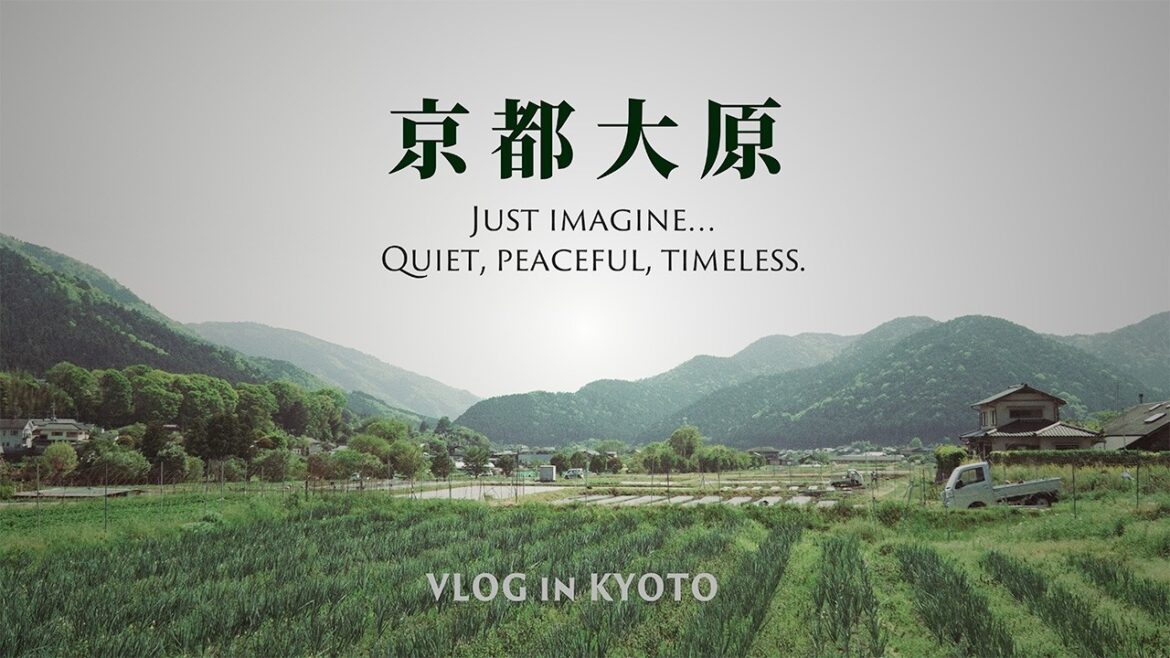Kyoto Ohara — Imagine Walking Through Japan’s Most Peaceful Countryside | 4K Travel Vlog |京都,大原,三千院
If you ever feel like.. changing your everyday life—just a little, Ōhara in Kyoto might be a good option. Here, time flows without anyone rushing you. Hello.I’m itsuya. This time, I’m visiting Ōhara, Kyoto. It’s a small basin village at the foot of Mount Hiei. From Kokusaikaikan Station, it’s a 20-minute bus ride to Ōhara. Located away from the heart of Kyoto, Ōhara preserves the charm of traditional rural life. The purpose of this journey is to trace those gentle scenes— the ones that captivated me— and walk through them together with you. Ōhara is a small basin surrounded by mountains. Located at the foot of Mount Hiei, it is home to many temples of the Tendai school of Buddhism—a place of prayer. A place to live quietly, far from the noise of the capital. Ōhara has been such a place for over a thousand years. The Takano River flows gently through the village of Ōhara, heading south, and eventually merges with the Kamo River, connecting to the city of Kyoto. Though it’s now a quiet mountain village, it was once a hub for people and goods. This was the “Saba Kaidō” used to carry seafood from Wakasa Bay to the capital. Ōhara was an important stop along that route. Though nestled in the mountains, it had deep ties to the capital. Knowing that makes the scenery before me feel a little different. “Beautiful place, isn’t it?” Late April — the cherry blossoms have fallen a little later than in the city. In Ōhara, it’s time to start preparing for rice planting. The water-filled rice paddies reflect the sky, ushering in the early summer scenery. Ōhara is a basin with large temperature differences between day and night. It’s the perfect environment for growing vegetables. They say that this temperature swing gives the vegetables their rich flavor. At the morning market, many people come to buy fresh produce. Kyō-yasai — traditional Kyoto vegetables — have long been loved by the locals. Today, they’re also known as premium brand vegetables. Just strolling through this scenery at a relaxed pace— you’ll feel the weight on your heart begin to lift. Before you know it, even your walking pace slows down. Ōhara has been a place of prayer for over 1,200 years. It’s home to many beautiful and historic temples. This time, I’ll introduce three that I especially recommend. First, let’s visit Sanzen-in Temple. The approach to the temple, lined with fresh green trees, feels like walking through a tunnel of vibrant light and greenery. It’s the most popular area in all of Ōhara. Because of its popularity, the temple grounds can get crowded, but it’s still a place well worth visiting. Next, I headed to Hōsen-in Temple. Compared to Sanzen-in, it’s quieter and more peaceful — part of its charm. Take your time enjoying tea as you gaze at the framed garden. It’s a special experience I hope you’ll try for yourself. The third temple is Jakko-in Temple. To me, it became the most memorable view of the journey. It was exactly the kind of scenery I had hoped to find in Ōhara. Stroll along a narrow path through the countryside village, and enjoy the 15-minute walk to Jakko-in. Perhaps it’s the scenery and air along the approach that give Jakko-in its quiet depth of beauty. For lunch, I stopped by “Kyugorō,” a place along the temple path. A kind grandma from the pickled vegetable shop recommended it to me. Always smiling — I hope she stays happy and healthy forever. Ōhara is a land surrounded by mountains— a quiet place, a little removed from the outside world. As I walked through this countryside village, I began to feel a growing sense of closeness to this land. There’s a comforting feeling, like touching a distant, nostalgic memory. As if blending into the calm air that surrounds you. Before I knew it, Ōhara had become a special place in my heart. A journey through the satoyama landscapes of Ōhara, Kyoto. “Beautiful place, isn’t it?” What began as just a travel destination had quietly become a place where my heart feels at home. And perhaps, you’ll find the same kind of experience waiting for you here. Thank you for watching until the very end!
Walk through the peaceful countryside of Ohara, Kyoto, in summer.
京都の山里・大原を、夏の静けさの中で歩く旅。
Just imagine…
Quiet, peaceful, timeless.
Not far from the heart of Kyoto,
there is a place where time moves differently.
No crowds. No noise. Just the sound of footsteps, rustling trees, and the quiet hum of life.
This is Ohara — a countryside village where you don’t need a plan.
You simply walk, and notice.
Along the way, you may find Sanzen-in Temple,
or follow a quiet path through satoyama hills to Jakko-in Temple, nestled in nature.
If you’re seeking a different kind of journey,
one that doesn’t rush or demand,
but gently invites you to breathe, to feel, to be…
Could this be your Japan?
京都・大原の静けさを歩く旅。三千院、寂光院の道すがらに広がる田園風景。
人混みのない山里に、風や足音だけの時間が流れます。
計画はいりません。ただ感じるだけで満たされる日本が、ここにあります。
自分にとっての「旅のかたち」を探しているあなたへ。
___________________________
■Chapters
00:00 Opening
00:43 Purpose of Trip
01:30 Overview of Ohara /京都・大原
03:25 Ohara in the season of fresh greenery
05:20 Sanzen-in Temple /三千院
07:42 Hosen-in Temple /宝泉院
09:11 Jakko-in Temple /寂光院
11:50 What is the charm of Ohara?
13:26 Ending
___________________________
■Map
Ohara Bus Stop (Kyoto Bus): https://maps.app.goo.gl/k8V4JoowA9iPN4Ah7
Sanzen-in Temple: https://maps.app.goo.gl/XNERAUX7HHM1NQmU6
Hosen-in Temple: https://maps.app.goo.gl/GjXVcSxjxUZsXgTEA
Jakko-in Temple: https://maps.app.goo.gl/6cXY9D6zvxL3nJFK7
■SNS Let’s connect!
〇Youtube : https://www.youtube.com/@tsukuyomi_no_tabi
〇Instagram : https://www.instagram.com/tsukuyomi_no_tabi/
#Japan #VLOG
#Kyoto #Ohara
#京都 #大原


1 Comment
thanks